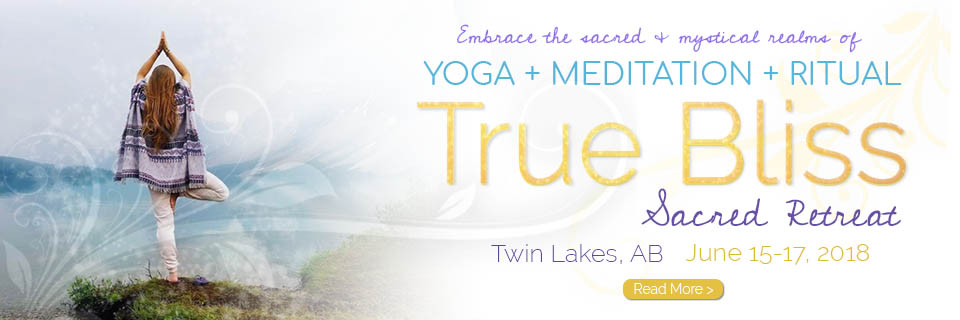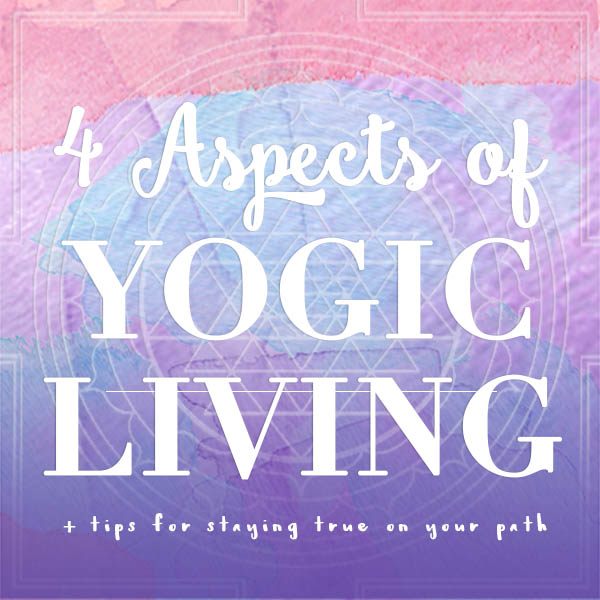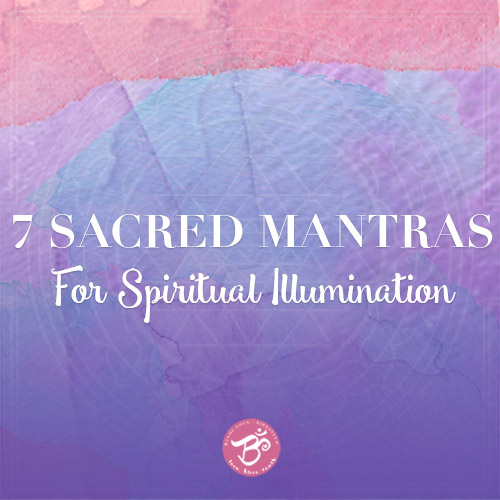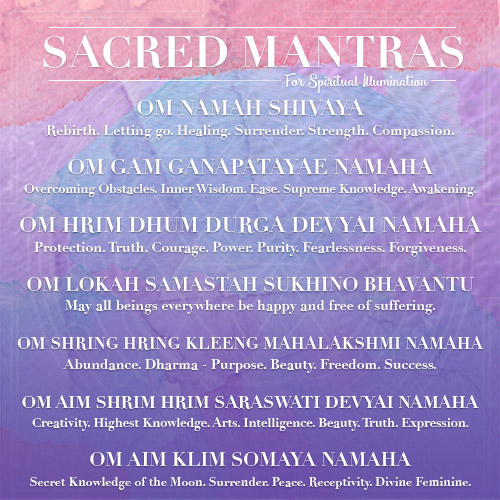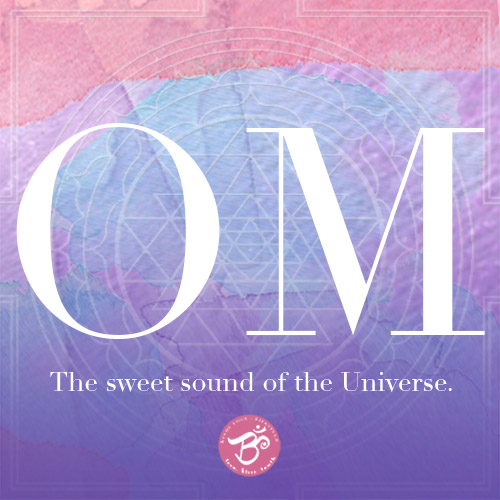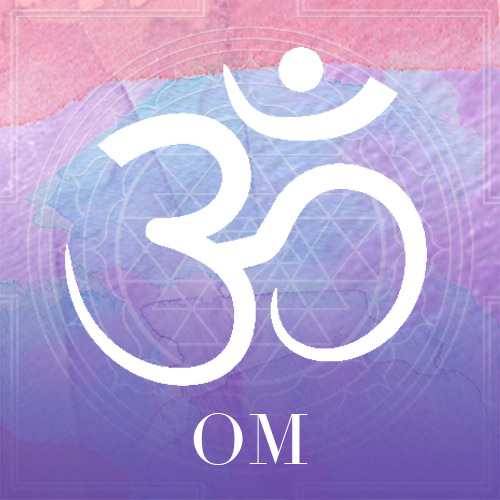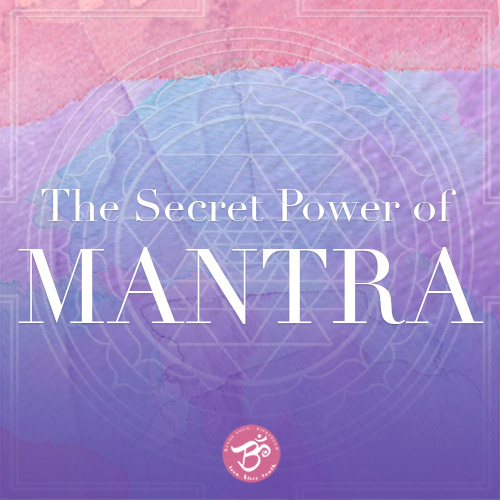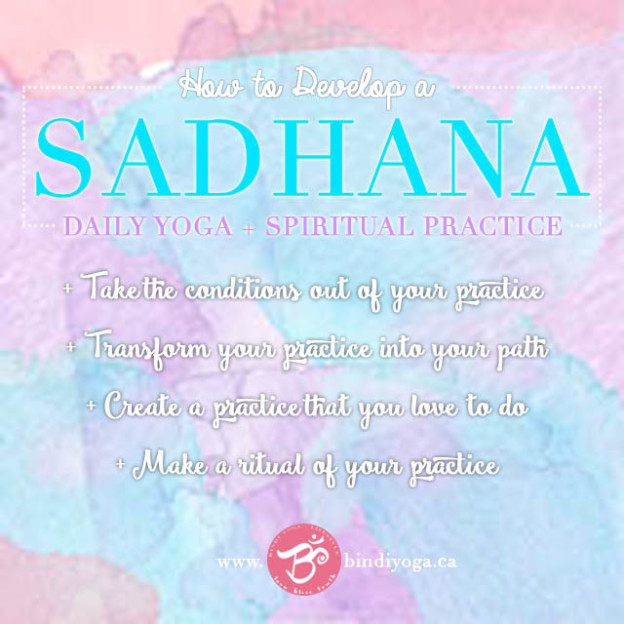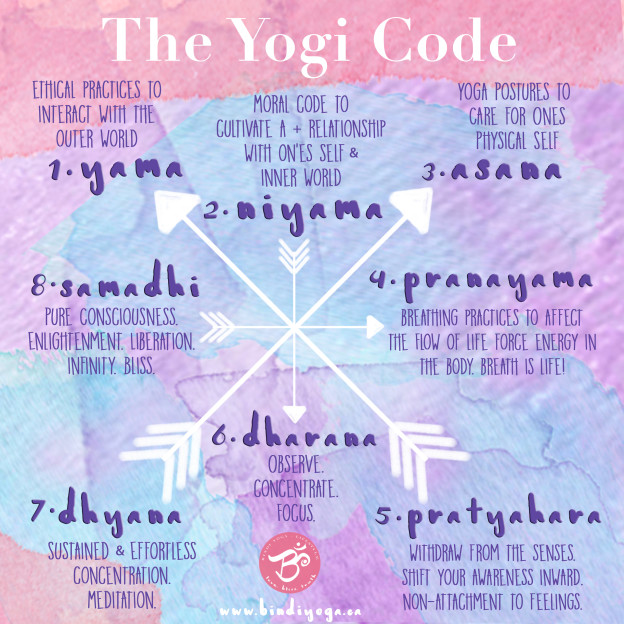The word Yoga means Union. By the very nature of the word, Yoga, refers to a state of Being that is one of Unity. It refers to the various practices that guide us into this blissful experience of Being in Oneness.
The ultimate goal of this ancient wisdom tradition called Yoga, is to experience Absolute Union with our own True Self.
You may be familiar with Yogic practices such as Poses (Asana), Meditation (Dhyana,) Breath Control (Pranayama.) These are all a part of a specific self-disciplinary path of yoga called Raja Yoga, in which one uses the breath, the body and mind to experience higher states of awareness, the state of Yoga – Absolute Unity.
But Raja Yoga is not the only way… did you know there are actually three other traditional paths of yoga designed to guide the practitioner to the state of Yoga – or Liberation?
In totally, the four paths of yoga include: Karma Yoga, the path of selfless service, Bhakthi Yoga, the path of love & devotion, Raja Yoga, the familiar path of self-discipline, and Jnana Yoga, the path of wisdom or self-inquiry.
Less known in western circles of yoga is the path of Bhakthi – the sweet path of love!
That’s right… Love can actually be your practice. There are many common ways to practice this beautiful path of yoga including dance, ritual, ceremony, worship, pilgrimage, prayer, singing and more.
Below, we’ll teach you one of our favourite practices of Bhakthi Yoga that has the ability to guide the yogi Home with ease, joy and of course… Love!
WHAT IS KIRTAN?
Kirtan is a simple, yet powerful spiritual practice of Bhakthi Yoga– the yoga of the Heart. Bhakthi is the “Yoga of Love and Devotion,” a deeply heart-opening experience, Bhakti is the cultivation of unconditional spiritual love.
Kirtan is considered the song of the soul. It is non-dogmatic and practiced in the Universal language of Love, through the singing of ancient Sanskrit chants, Kirtan is a powerful, effortless and joyous way to connect to your heart and meditate.
Chanting is the celebration and worship of Life and Love. Immersed in the sound, vibration and sensations of the sacred Sanskrit chants, called Mantra, the mind becomes quiet, the soul awakens and the Heart blossoms into Pure Love.
Kirtan is another practice of yoga which helps guide our way back home— to ourselves, to the True Essence of our Being, which is Divine Love. It is a highly effective spiritual practice, Sadhana, which allows us to channel all of our emotional states towards The One of which we are all apart, and to lose ourselves in this Unconditional Love that unites us all.
“Devotional singing is the spontaneous music of the soul. Nobody can resist the inspirational qualities of such music penetrating one’s heart when it is sung with concentration and devotion. Children, sing from the depth of your hearts. Let the heart melt in prayer. The joy of singing the Lord’s name is unique. This Bhajan is for us to pour out all our hearts’ accumulated dirt. Leave aside all shyness and open your heart to God.” — Amritanandamayi Devi
WHY CHANT?
“Chanting is like asanas for the mind & heart” – Krishna Das
Much like how each Yoga Asana (pose,) has unique benefits to open and heal the body, each Sanskrit chant is infused with unique vibrations to open and heal the mind & heart.
These ancient mantras are power medicine that heal and align us from deep within. And much like when a child needs to take medicine, we hide it in some kind of sweet syrup. With chanting, the music is the sweet syrup that the medicine of mantra is infused in, and the silence that follows the chant is the moment we digest the medicine and allow it to heal us.
These ancient chants contain powerful and transformative sounds and vibrations and through singing them with love, we are able to experience a super conscious state of existence— kindled by intense emotion, concentration upon the mantra and immersion into the present moment.
The nature of our True Self is Bliss— and when we call out the various names of the Godly Self that dwells within us, the mind merges into its Bliss. It loses itself in Bliss. It becomes one with the Bliss itself.
These simple melodies invoke a deep state of peace, harmony and tranquility inside us to that help us reconnect with who we really are. Through sacred prayers of intention, gratitude and devotion we unite with the Pure Love that resides within us all.
These ancient Vedic chants are songs of peace and they fill our hearts with love. And when we come together with devotional music and chanting, not only are we attuning ourselves to these positive vibrations of peace and love, but we are rendering a great service to the world. Chanting aids in humanity worldwide in it’s quest for peace and unity. It is a potent remedy for healing and to reconcile the illusion of separation between us. We join together with our voices, hearts and prayers or healing, joy and peace for all beings everywhere.
WHY PRACTICE?
“If we follow the path of devotion, we can enjoy the fruit of bliss from the very beginning, whereas with the other paths, it can be tasted only towards the end. Bhakti is like the jackfruit tree that bears fruit at its very base, while one may have to climb to the top to pluck fruit from other trees.” — Amritanandamayi Devi
Chanting is not some obscure new age musical performance… it is a valuable tool practiced by people from all walks of life from all over the world to help heal their bodies, quiet their minds, open their hearts and invite the sacred into their lives.
The latest discoveries in neuroscience confirm the healing power and benefits of sound, particularly of devotional music.
Below are some benefits of chanting as indicated by both modern science and the great sages and saints of India:
- Soothes the nerves & relieves tensions
- Balances mind and emotions
- Improves overall health and immune system
- Improves concentration powers
- Supports one’s meditation practice
- Reduces negativity in the mind
- Purifies the environment and surroundings
- Guides us into contentment and contemplation
- Purifies the Nadis & Chakras & awakens the Kundalini
- Directs emotions towards a positive goal
- Melts the heart & fills the mind with purity
- Generates harmony, compassion & divine love
- Experience God – the Love of your own Divine Nature
TYPES OF PRACTICES & WHAT TO EXPECT IN A PRACTICE?
In the Bhakthi tradition, there are many types of Sangita, or Devotional Music— most commonly known in western circles are the practices known as Kirtan and Bhajan.
Kirtan comes from the Sanskrit root Krit, which means to praise or celebrate.
Kirtan is a chanting practice of union through devotion that encourages the repetion of Sanskrit Mantras or Divine Names to merge into a deep meditation. It is practiced in a call & response format of which the leader, the Kirtan Wallah, calls the mantra chanted and the group responds it back. It is often experienced in a group environment and usually practiced in the ancient and holy language of Sanskrit. It is often an interactive experience of singing and can be very powerful, fun and ecstatic!
Alternatively, Bhajan, which comes from the root word Bhaj, mean sharing.
Bhajan is usually practiced as communal singing in a sing-a-long format. It may be experienced in a group or alone and refers to devotional songs in prayer and hymns to the divine (rather than the repetition of God’s name.) It is often more free form and less structured than a Kirtan and can be practiced in many languages.
Both practices are not so much of a performance or concert, but rather a journey into the Self through deep listening and chanting the various names and aspects of our own Divine Nature.
The main elements of both Kirtan and Bhajan are mantra, music and meditation— but the secret ingredient to a very a powerful practice is your own Bhakthi, love and devotion.
Immersed in the sound, vibrations and sensations of the sacred sounds of the mantras, the mind becomes absorbed into and entrained by these vibrations, and at the end of the chant, there is a blissful silence or meditation to feel and experience the profound benefits of chanting, in which the mind becomes deeply still.
HOW TO PARTICIPATE?
”One can realize God through Kirtan alone. Kirtan is singing of God’s name, with feeling. If one does Sankirtan from the bottom of one’s heart, with full bhava (devotion) and prem (love) even the trees, birds and animals will respond. They will be deeply influenced. Such is the power of Sankirtan. It brings the devotee face to face with God.
The chanting of Sanskrit Kirtan, even when mechanically done, produces certain effects. When done with devotion, and awareness of the meaning, its benefits are immeasurable.” – Swami Sivananda
Chanting is universal—you do not require any previous experience, you don’t need to know the chants ahead of time, you don’t need to be a good singer or feel coordinated with following a rhythm. More important than how it sounds, is how it feels. More valuable than knowing exactly the chants is your love and devotion when you sing them. More important that understanding the meaning of the chants or the practice, is your own Direct Experience.
Bhakthi Yoga isn’t really something you do. Bhakthi is love. So practicing Bhakthi Yoga means falling in love. And this love that we may experience here isn’t new— it isn’t something you attain or achieve or become— because you are already that. But rather, it’s something you remember, something you reconnect to and stoke from deep within.
This love is the love of the Inner Self, which through practice, we can learn to see ourselves reflected in the eyes of all beings we encounter. This is true unconditional spiritual love.
Ultimately, what one puts into this practice is what they receive from it. To the degree of which one may be present, open and expressive is to the degree of which one may experience the profound nature of this practice. This is your practice, so really— anything goes. There is truly no right or wrong way to experiencing this practice!
However, if you’re new to the practice, here is some insight into how you may choose to express yourself through the practice:
+ Sing: Singing is the heart of Kirtan. It’s not about how well you sing or how musical you are, but about how it feels. As long as your practicing with an open-heart, you’re doing it right.
+ Clap or Dance: Allow the chants to move through you and within you. You may feel inspired to clap along to the beat, tap along in your seat or get up and dance! Any physical expression of love & devotion that moves through you goes here.
+ Listen & Receive: In call and response Kirtan, hearing the names of the Divine is equally important as calling it out. When you hear the chant, hear that Divinity residing in your soul and when you call it out, feel that Divinity being expressed.
+ Meditate: Whether your singing aloud, or chanting silently in your own mind, chanting can evoke a deep sense of meditation within. During a practice you’re welcome to close your eyes and meditate – feeling the divine vibrations of sound dancing within and around you.
+ Lose Yourself in Love: Allow the magic and mystery of the chants to carry you within – to your Self, to your Source, to the Universal Love that is your True Nature.
+ Begin & end in blissful silence. Silence is the blank canvas from which the sound of music is painted upon. Beginning and ending in silence gives us a chance to deeply appreciate and experience the art of chanting.
“To gain concentration in this age of materialism, bhajan is easier than meditation. By loud singing, other distracting sounds will be overcome and concentration will be achieved. Bhajan, concentration and meditation, this is the progression. In fact, constant remembrance of God is meditation. Bhajans sung with one-pointedness, will benefit the singer, the listener and also Mother Nature. Such songs will awaken the listeners’ minds.” – Amritananda Mayi Devi
May we all fill our Hearts with Infinite and Eternal Love as the magic of Kirtan carries us within– to our own Self, to our Source, to the Universal Love that is our True Nature and that which unites us All as One.
~
JOIN US FOR…
✨Songs of Yoga: An Evening of Kirtan ✨
Tuesday, June 12: 6 PM – 8 PM
A heart-opening experience of Bhakthi Yoga – “The Yoga of the Heart”
✨ Discover Bhakthi – the Love of Yoga
✨ Learn ancient Sanskrit mantras to free & illuminate the mind
✨ Experience a simple meditation practice to guide you into your Heart
✨ Explore Kirtan— musical chanting to blossom the Heart & awaken the Soul
✨ Connect to your True Self through sacred prayers of intention, love & gratitude
*Space is limited – please send us an email at bindi@bindiyoga.ca with instructions to reserve your spot.*



